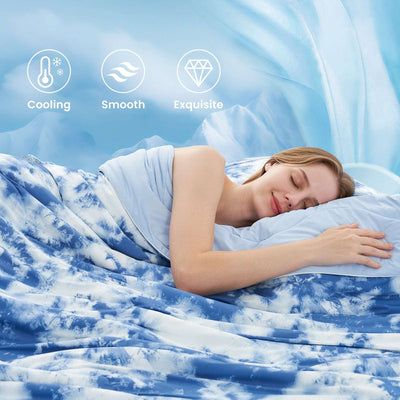Discover the Ultimate Comforter Secrets for a Cool Night's Sleep!
For many, a good night's sleep is an elusive dream, especially for hot sleepers who struggle with overheating during the night. The right comforter plays a crucial role in achieving restful slumber, as it can significantly impact sleep quality and overall comfort. It's not just about warmth; it's about creating an environment conducive to relaxation. With the right comforter, hot sleepers can enjoy a cooler, more comfortable sleep experience. Understanding the nuances of comforter materials and features can make all the difference in transforming your sleep routine.

Understanding Hot Sleepers and Their Needs
Being a hot sleeper means that you often wake up feeling uncomfortably warm throughout the night, leading to disrupted sleep and fatigue during the day. This condition can stem from various physiological factors, including metabolism, hormonal fluctuations, and even diet. For instance, individuals with a higher metabolic rate may generate more body heat during sleep, while certain hormonal changes—like those experienced during menopause—can lead to increased sweating. Additionally, environmental factors such as room temperature and bedding materials also contribute to the overall sleeping experience. Understanding these elements is essential for hot sleepers looking to enhance their comfort and sleep quality.
Key Features to Look for in a Comforter for Hot Sleepers
When searching for the perfect comforter, hot sleepers should prioritize several key features. Breathability is paramount; materials that allow air circulation help to dissipate heat and maintain a comfortable temperature. Look for moisture-wicking properties that draw sweat away from the body, keeping you dry and cool. Lightweight materials are ideal, as they provide comfort without the added bulk and heat retention of heavier options. Additionally, temperature regulation features can help adapt to changing body temperatures throughout the night. By focusing on these characteristics, hot sleepers can find a comforter that meets their unique needs.
Types of Comforters Ideal for Hot Sleepers
Various types of comforters cater specifically to hot sleepers, each with its own set of pros and cons. Cotton comforters are a popular choice due to their natural breathability and softness, making them suitable for year-round use. Linen is another excellent option; it’s lightweight, highly breathable, and has moisture-wicking properties that enhance comfort during warm nights. Silk comforters offer luxurious softness and excellent temperature regulation, but they can be more expensive and require careful maintenance. Lastly, down alternatives provide a balance of warmth and breathability without the heat retention of traditional down, making them a viable option for those sensitive to temperature changes. Evaluating these materials will help hot sleepers make informed choices for their bedding needs.
Tips for Choosing the Right Comforter
Selecting the right comforter involves more than just picking a material; it requires consideration of several factors. Fill power is crucial, especially in down or down-alternative comforters, as it indicates the fluffiness and insulating ability of the material. A higher fill power can provide warmth without excess weight, making it favorable for hot sleepers. Thread count also matters; while it’s often associated with softness, a lower thread count can enhance breathability. Personal preferences, such as allergies or sensitivities, should also be taken into account when selecting a comforter. Finally, consider the seasons and your sleeping environment—lighter, more breathable options are ideal in warmer months, while slightly heavier comforters may be more suitable for cooler weather.
Maintaining Your Comforter for Longevity and Performance
To ensure that your comforter continues to provide cooling benefits and remains in good condition, proper maintenance is essential. Regular washing according to the care instructions will help remove dust mites and allergens that can accumulate over time. For most comforters, a gentle cycle with mild detergent is recommended. When storing your comforter, ensure it is completely dry to prevent mildew and odors. Consider using a breathable storage bag to protect it from dust and moisture. By following these care tips, you can extend the life of your comforter and maintain its performance, ensuring a consistently comfortable sleep experience.
Final Thoughts on Comforters for Hot Sleepers
In summary, choosing the right comforter is crucial for hot sleepers seeking a restful night's sleep. Understanding the specific needs of hot sleepers, along with key features and types of comforters available, can guide you in making an informed decision. Remember to consider personal preferences and care for your comforter to maximize its benefits. With the right comforter, hot sleepers can transform their sleeping environment, leading to improved sleep quality and overall well-being. Take the time to find the perfect fit for your needs, and enjoy the comfort of a cooler night's sleep.






